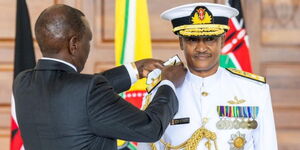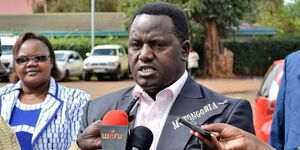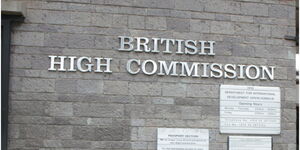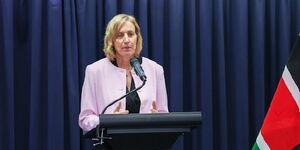Roads and Transport Cabinet Secretary Davis Chirchir was forced to explain a Ksh175 billion road infrastructure bond amidst fears the billions could balloon the country’s Ksh11 trillion debt.
Appearing before the National Assembly's Budget and Appropriations Committee on Friday, September 5, Chirchir was put to task to shed light on the Ksh175 billion long-term infrastructure bond facility from the Trade and Development Bank (TDB).
According to Chirchir, the bond was not a loan as it was part of a financing arrangement where Ksh7 from the Road Maintenance Levy Fund (RMLF) was allocated to a Special Purpose Vehicle (SPV). As such, the Ksh175 billion was not being borrowed by the government, but by the SPV, a legal entity created specifically for this deal.
So, instead of the government giving its promise (a sovereign guarantee) to repay the loan, the SPV would use future revenue from the RMLF as collateral. The Ksh7 from the RMLF, therefore, goes to the SPV for this specific purpose.
Why the Bond is not Public Debt
As for why the bond is not considered part of the public debt, the loan is on the books of the SPV and not the government, and thus it is considered "bankruptcy-remote" from the government.
“No guarantee has been issued by the Government of Kenya for this transaction. The risks associated with the transaction rest with the purchaser of the receivables, that is, the SPV,” noted the CS.
“The transaction does not sit in the books of the government, but in a bankruptcy-remote SPV. Therefore, it has no implication on public debt ceilings and fiscal sustainability,” said CS Chirchir.
Kenya's Debt Level
Currently, Kenya has a public debt of over Ksh11 trillion. Of this, Ksh5 trillion comprises domestic debt, while Ksh5.09 trillion accounts for external debt. Domestic debt largely consists of Treasury Bills and Bonds, whereas external debt is owed to multilateral, bilateral, and commercial creditors.
At the moment, Kenya’s debt level stands at 63 per cent of its GDP well above the stipulated 55 per cent.
At the same time, Chirchir stated that the funds were intended to settle pending bills and other financial obligations at the State Department for Roads.
A huge chunk of the funds is expected to be used for the expansion of the controversial Nairobi-Nakuru-Mau Summit, where construction was expected to begin at the end of August 2025.
The highway is a critical segment of the Northern Corridor, connecting Nairobi to western regions and neighbouring countries such as Uganda, Rwanda, Burundi, South Sudan, and the eastern Democratic Republic of the Congo.
The project is expected to take 24 months to complete, with a target date of June 2027. It is is expected to ease transport and travel from Nairobi through Nakuru to Western Kenya, a route that has long suffered from serious traffic congestion on weekends and during national holidays.












